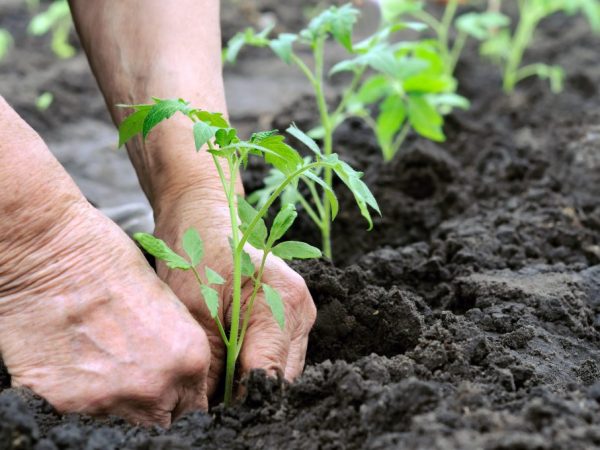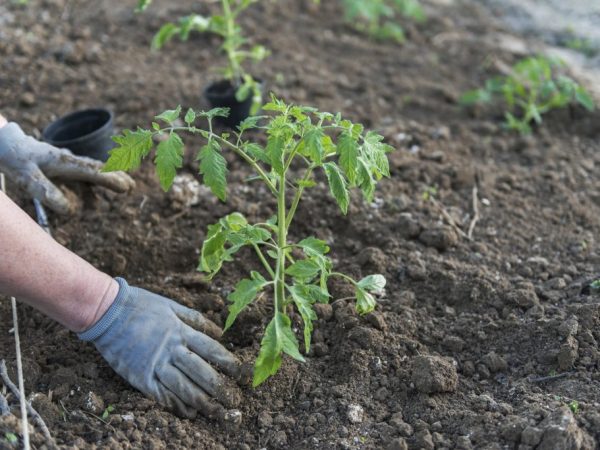Then the tomatoes are planted in the garden
In order to get a good harvest of tomatoes from year to year, you need to periodically change the place of their planting. But not all vegetable crops are good predecessors. We will figure out, after which you can plant tomatoes and what can be planted in the garden after tomatoes.

Crop rotation rules in the garden
Why crop rotation
Let's figure out why you need to change the planting site of a particular vegetable crop. Each plant needs specific nutrients. Accordingly, if you do not change the planting site of a vegetable crop for several years, the soils will become poor in certain nutrients, and this will negatively affect both the yield of plants and their health. This problem is solved by additional application of mineral fertilizers to the soil, which significantly increases the cost of vegetables grown.
The need for crop rotation is also due to the fact that related crops (melons, nightshades, legumes, etc.) are unstable to the same diseases. So tomatoes, strawberries and potatoes, for example, are equally susceptible to late blight. Given that bacteria and fungal spores persist in the soil, it will be necessary to prevent all diseases to which a vegetable crop is prone immediately after planting. This will take a lot of time and will entail additional costs. It is possible to carry out pest control of the soil in the fall, but this procedure does not always bring the desired result.
With proper crop rotation, it will be possible to provide each crop with the necessary nutrients for it practically without the use of fertilizers. Also, competent crop rotation minimizes the risk of any diseases, and if you organize the correct neighborhood of plants on your garden plot, you can minimize the risk of harmful insects.
Recommendations
Plant nutrition occurs mainly through the root system. In order for each next year to be rich in harvest, it is necessary to plant plants with different root lengths on the same beds. Tomatoes, especially those grown in seedlings, have a short root system. Accordingly, they take nutrients from the upper layers of the earth, and the deeper layers of the soil remain rich in nutrients, so it is advisable to plant plants with a deep root system next year. This can be, for example, garlic or eggplant, beets or radishes.
What to plant before tomatoes
Tomatoes are most in need of potassium, phosphorus and nitrogen. Accordingly, the soil for their cultivation must be rich in these microelements. Poor precursors for tomatoes are potatoes, peppers, peas, physalis, eggplant. Also, you cannot plant tomatoes for more than 2-3 years in a row on the same bed.
As for the good precursors for tomatoes, these are:
- any cabbage (white cabbage, cauliflower, etc.);
- pumpkin crops (pumpkin, zucchini, squash, cucumbers, melon);
- turnip;
- carrots and beets;
- green onions and siderata herbs.

It is better to change the location of planting tomatoes every two years.
On the beds where tomatoes have been grown for 4-5 years in a row, cabbage and pumpkin crops are planted, after which the tomatoes give good yields. If the tomato planting site changes at least once every 2 years, then you can choose any of the above crops.
What to plant after tomatoes
On the beds where tomatoes were grown, onions and garlic, beets, legumes, cabbage and celery, parsley, lettuce and other greens grow well. You can also plant carrots, but after tomatoes they do not grow very well. To stimulate the growth of this vegetable crop, it will be necessary to add mineral fertilizing to the soil several times per season.
Another vegetable crop that grows well after tomatoes is cucumbers. Farmers who plant this vegetable in place of tomatoes find that cucumber seedlings are very well accepted. At the same time, the vegetable is susceptible to the same diseases as tomatoes, therefore, when growing cucumbers, the plant is timely treated with fungicides. Problems are avoided by gardeners who plant disease-resistant hybrid cucumber varieties.
What can not be planted
What to plant after tomatoes in the garden is not recommended, so these are potatoes, peppers and other nightshade crops. This prohibition is primarily due to the presence of common diseases in all nightshades. Another taboo applies to all berry crops.
Strawberries and wild strawberries grow extremely badly after tomatoes from berry crops.
Growing tomatoes in a greenhouse
In regions with a cold climate, it is not always possible to grow tomatoes outdoors, so you have to build a greenhouse on the site and grow a heat-loving vegetable there. Since the greenhouse is a stationary structure, it is not possible to change the place of planting tomatoes. But even when growing a vegetable crop not in the open field, but under a cover, you can organize a crop rotation using green manure herbs.
Neutral soils are best suited for tomatoes, but when growing a vegetable, the soil becomes acidic. Accordingly, the task of the farmer growing the vegetable in the greenhouse is to correct the acidity of the soil. The best way to cope with this task is legumes, siderates or mustard.
In the fall, after harvest, or in early spring, plant any legume or white mustard. Both crops are equally good as siderates that reduce the acidity of the soil. It is recommended to plant green manure before winter. You need to mow them 10-14 days before planting tomatoes. If the spring is early and warm, you can plant green manures just before planting the main vegetable crop.
Conclusion
We figured out after which tomatoes grow best and what crops should be planted in their place next year. Gardeners are advised to follow the crop rotation in the garden using a convenient table. The personal plot is conventionally divided into zones, each of which corresponds to a column of the table. The lines indicate the year. With the help of such a tool, it is easy to monitor the crop rotation on the site.
In general, each farmer gets the best crop rotation options in a practical way. In many respects, the yield of crops depends on the type of soil and climatic conditions of the region in which they grow. In some regions, at the place of planting tomatoes, it turns out to harvest a good harvest of onions, and the garlic grows poorly. And in some, on the contrary, garlic grows much better than onions.
The best neighbors for tomatoes are onions, peppers, eggplants, and herbs. But for potatoes, it is better to find another place in the garden. Also, it is not recommended to plant cucumbers, peas, grapes and cabbage next to tomatoes.


